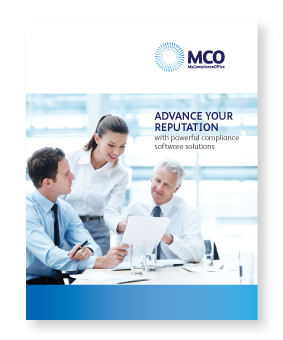SMA Disclosure
New SEC requirements significantly expand public disclosures by registered investment advisers for their SMA businesses. The requirements take effect Oct 1, 2017. The SEC also confirmed provisions for "umbrella registration" of related advisers and generally overhauled many questions on Form ADV. There is time to act, but many to-do's follow from the new rules. Our webinar will cover practical tips for the coming compliance challenges
You can download a full copy of the slides from this webinar.
Full video transcript available below:
Despite the emphasis of the SEC on the public nature of the disclosure, they did make some effort in response to a lot of comments to soften the edges, if you will, of public disclosure, and to make this a somewhat less threatening development, and we summarize in this slide and the one after, some of the refinements that the SEC made a disclosure mostly in response to comments from the industry. First, they gave relief to smaller investment advisors from the reporting requirements with regard to borrowings and deriavatives, by increasing the threshold size of the SMA business subject to reporting from 150 million to 500 million. Apparently the release indicates that let about 3,000 investment advisors off the hook with respect to borrowing and deriavative reporting. They refined the categories of investment asset to which all IRAs need to report from ten to twelve, adding cash and cash equivalents as category and clarifying the equity securities categories.
|
They, as I said before, they confirm that IRAs may use their own internal methodologies in categorizing investment assets, and they also made a point of saying that when the SMA investment is in a fund, be it public or private, the advisors are not supposed to look through the funds investments to categorize the underlying assets. The investment funds themselves are a category, and the SEC wants to understand the extent to which SMA accounts invest in funds. They did not offer us a definition of separately managed account, but their instructions now clarify that RAUM attribitable to investment companies, business developmenet companies or other pool investment vehicles should not be included in the calculation of RAUM for the estimated business. |
|
They also spent some time speaking about the reporting obligations of subadvisors and clarify that subadvisors should report on the estimated business that they in fact conduct for other advisors, so that if you have a SMA account of 100 million and for subadvisors, advisors have 50, the subadvisors should report on the 50. Acknowledging that this may in some instances result in double counting of assets, the staff nevertheless preferred to do it that way. Should I go on, Nathan? |
|
I have one thing I would add here. In the categories of things that the SEC thinks improves the picture as far as protecting confidential information, the SEC is putting a lot of store by the fact that while later in the rule making, they require what we're going to refer to as precision in things like numbers of accounts as opposed to ranges in numbers of accounts. They are allowing a less than five category, a fewer than five, so that if you are the only SMAa, you're not going to get identified as the only SMA that a particular RIA has. You will be sheltered in the SEC's mind by the fewer than five category. Okay? |
|
Okay. Continuing on to the next slide. A few more refinements. They revamped the basis of disclosure from net asset value to regulatory assets under management, which certainly would reflect better the size of the business managed by an investment advisor. They also changed the basis for borrowing reports from weighted average amount to dollar amount, which should simplify things, and reduced the number of levels of gross notional exposure from 4 to 3, and they elimiated the proposal to require disclosure of the exact number of separately managed accounts, managed at each level, so that there could be a little less transparency with regard to the size of the investment advisor's business. |
|
They did not define deriviaties, they did not want to go down that rabbit hole. They gave some clarifications with respect to the treatment of interest rate deriviatives. Those were about the sum of the concessions that the SEC made from their original proposal. This webinar was co-hosted with Shearman & Sterling LP. To learn more visit www.shearman.com |


